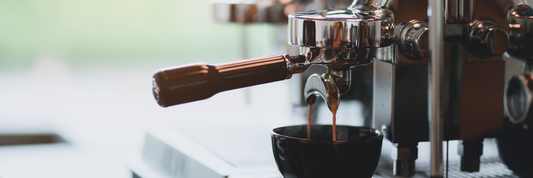Logos are an integral part of our daily lives, representing brands, businesses, and organizations. Have you ever stopped to wonder where these logos actually originate from? Let's dive into the captivating history of logos to uncover their intriguing origins and evolution over time.
History Of Logo: Ancient Origins
Around 3200 BC, the Ancient Egyptians developed hieroglyphics, among the first people to use symbols.
Egyptians began incorporating grids into their designs to develop a set of consistent guidelines for their drawings around 1,000 years later. This has become fundamental in logo design today when grids set proportions and ratios that allow a consistent reproduction of the same design.
However, the Egyptians were not the only ones to start using images as symbols. Around 1600 BC, people in China were also creating their characters, each one representing a word or idea.
Besides that, the Ancient Greeks had also developed their form of script known as Linear B (consisting of around 87 syllabic signs and over 100 ideographic signs symbolizing different objects or commodities).

Heraldic Symbolism
By the Middle Ages, among the aristocracy, noble families were keen to identify and distinguish themselves from others with their own logos known as heraldic crests or a coat of arms.
In the Middle Ages, noble families were keen to identify and distinguish from others by logos (heraldic crests or coat of arms).
Shop signs also developed surprisingly. According to T Signs, most of medieval Europe was illiterate, so shops would use signs to identify what goods or services they provided.
King Richard II of England enacted a law in 1389 mandating breweries to post a notice outside or risk having their beer seized. Since ale was typically used in place of water during this time and water was not always safe to drink, the signage was meant to aid passing inspectors and was considered a safety precaution.
When it came to logos, brewers seemed to be ahead of the curve. According to 1000 Logos, the Belgian brewer Stella Artois is credited as being among the first businesses to use a logo in 1366. Even now, its logo contains a reference to that date.
Printing Boom
Thanks to technological developments, color printing in large quantities became feasible by the 1800s, enabling businesses to create visually striking labels, posters, and advertisements for their products.
Around this period, some of the most recognizable logos were developed. For example, Frank Mason Robinson created the Coca-Cola logo in 1885, and Levi Strauss & Co.'s "two-horse" picture logo in 1892 led to customers frequently requesting "those pants with two horses," according to Time Magazine.
Logos could be printed on a variety of materials, including T-shirts and tote bags, thanks to the invention of screen printing in 1907, though the technology wasn't widely adopted for another 40 years.
Creative Design
Logos had primarily been used to aid in public identification and recognition of a brand until the middle of the 20th century.
However, many consider Paul Rand's 1956 creation of the now-iconic pictorial IBM logo, which features an eye and a bee, to be a turning point in the history of logo design.
As an illustration, consider the Chase Bank logo, created by Tom Geismar and among the first abstract symbol logos ever used by an American company. His goal was to produce a statement piece that was meaningful and could be printed in small quantities. The logo's geometry and colors represented professionalism, confidence, unity, and loyalty. They also portrayed the bank as a powerful financial institution that prioritizes its clients.
Other outstanding examples are the NASA logo, created in 1976 by Danne & Blackburn to inspire patriotism, and the iconic "I heart NY" logo created by Milton Glaser in 1977 to increase tourism in the city before donating it to the New York State Department of Commerce for free.
Digital Era
Since the 1970s, companies have been able to incorporate computer-aided drawing (CGI) into their branding, allowing for the creation of more distinctive logos.
More people had access to personal computers by the 1990s. With the release of InDesign and Photoshop by Adobe in the early 2000s, sophisticated digital graphic design tools became widely available, enabling small businesses to design their own logos without having to pay a high-priced agency.

consumed on screens, so companies needed to come up with creative ways to make their logos stand out.
According to the blog Logo On My Way, MTV came up with the idea of continuously changing their logo to symbolize the dynamism of their brand.
Recently, logo design has evolved once more into a more flat and minimalist style. Consider how the Google logo evolved from its initial 1998 appearance, which had a semi-3D appearance with a slight drop shadow, to its current clean, crisp, and modern feel.
While maintaining consistency is crucial, some businesses have come to understand how crucial it is to update their logos to reflect their changing brand identity. One platform where this has been executed well is Instagram. This does not, however, imply that you must completely redesign your logo; small aesthetic adjustments can also keep things up to date.
Conclusion
As we reflect on the rich history of logo, it becomes clear that these symbols are not just mere images but powerful tools for communication, identity, and branding. From their humble beginnings in ancient civilizations to their ubiquitous presence in the digital era, logos continue to shape the way we perceive and interact with the world around us.
Remember, behind every logo lies a fascinating story of origin and evolution, embodying the values, legacy, and aspirations of the brands they represent. So, the next time you see a logo, take a moment to appreciate the craftsmanship, history, and thought that went into creating it.
Related Articles




